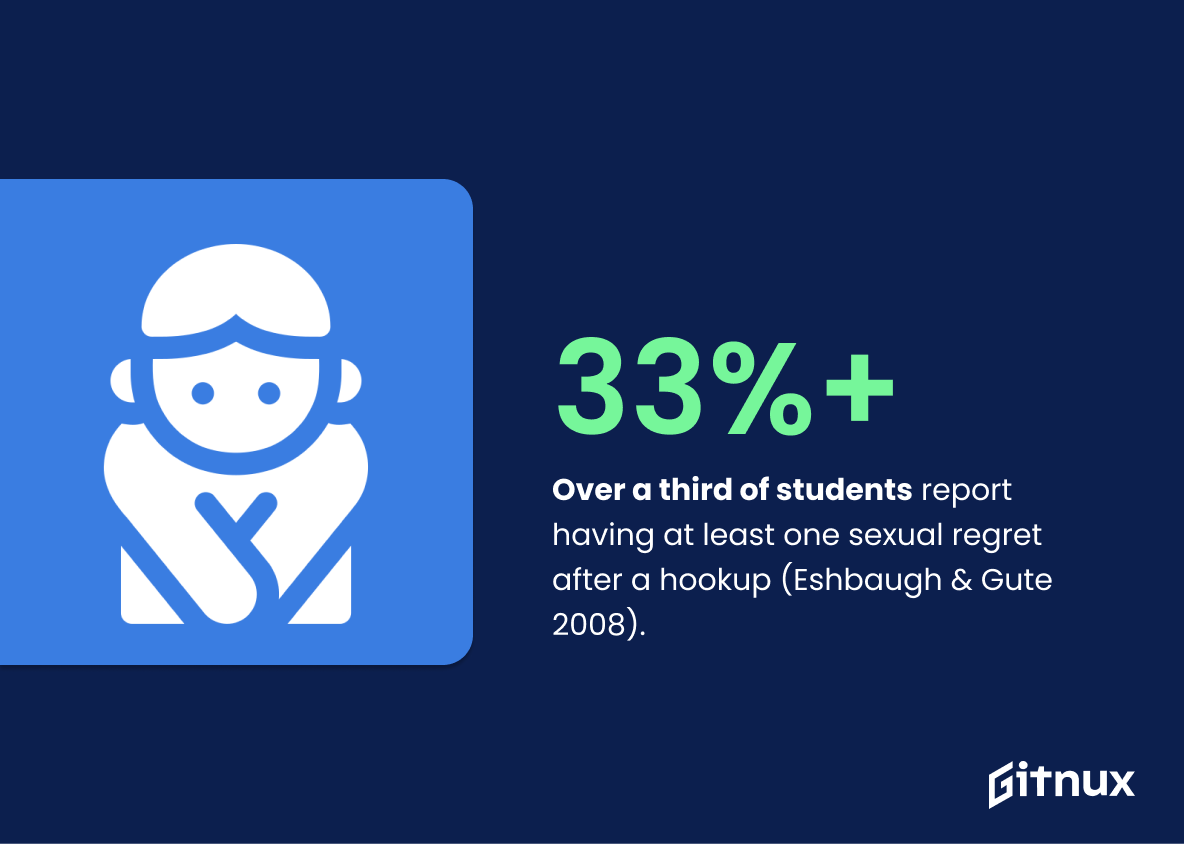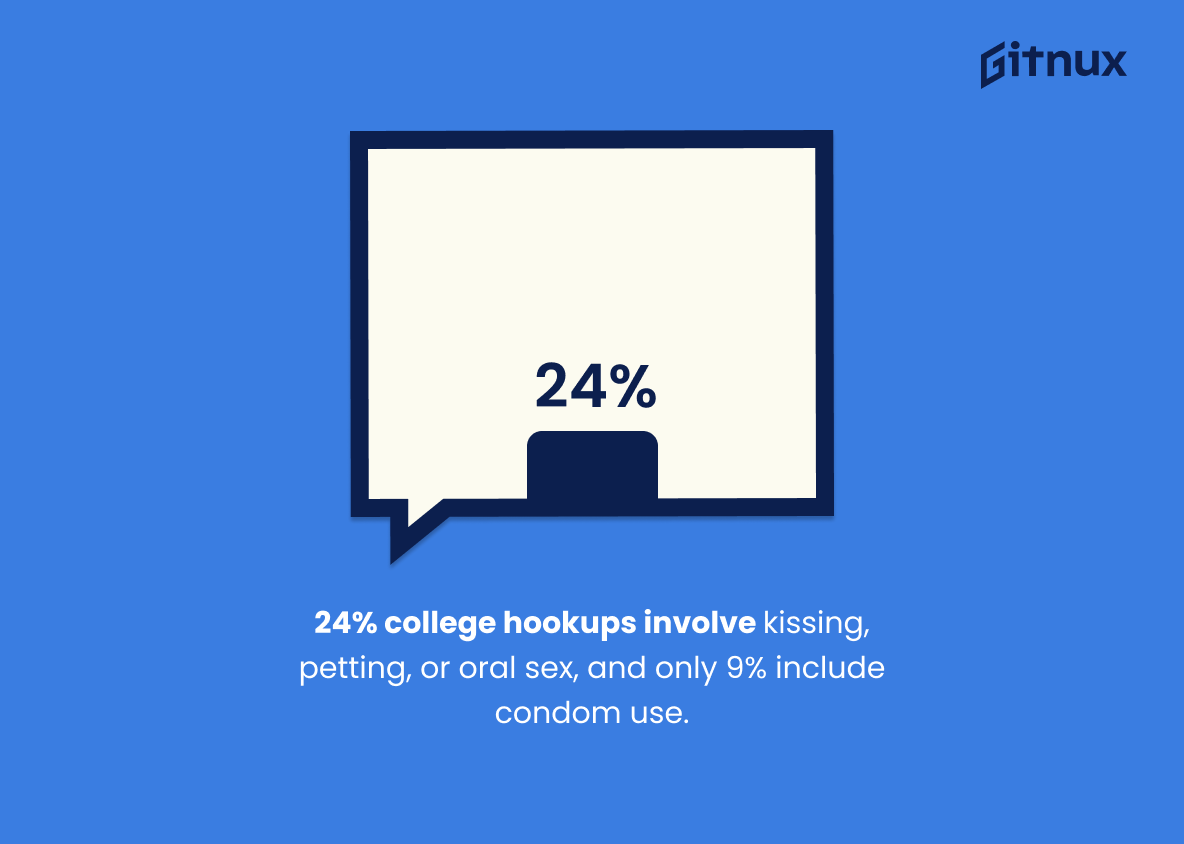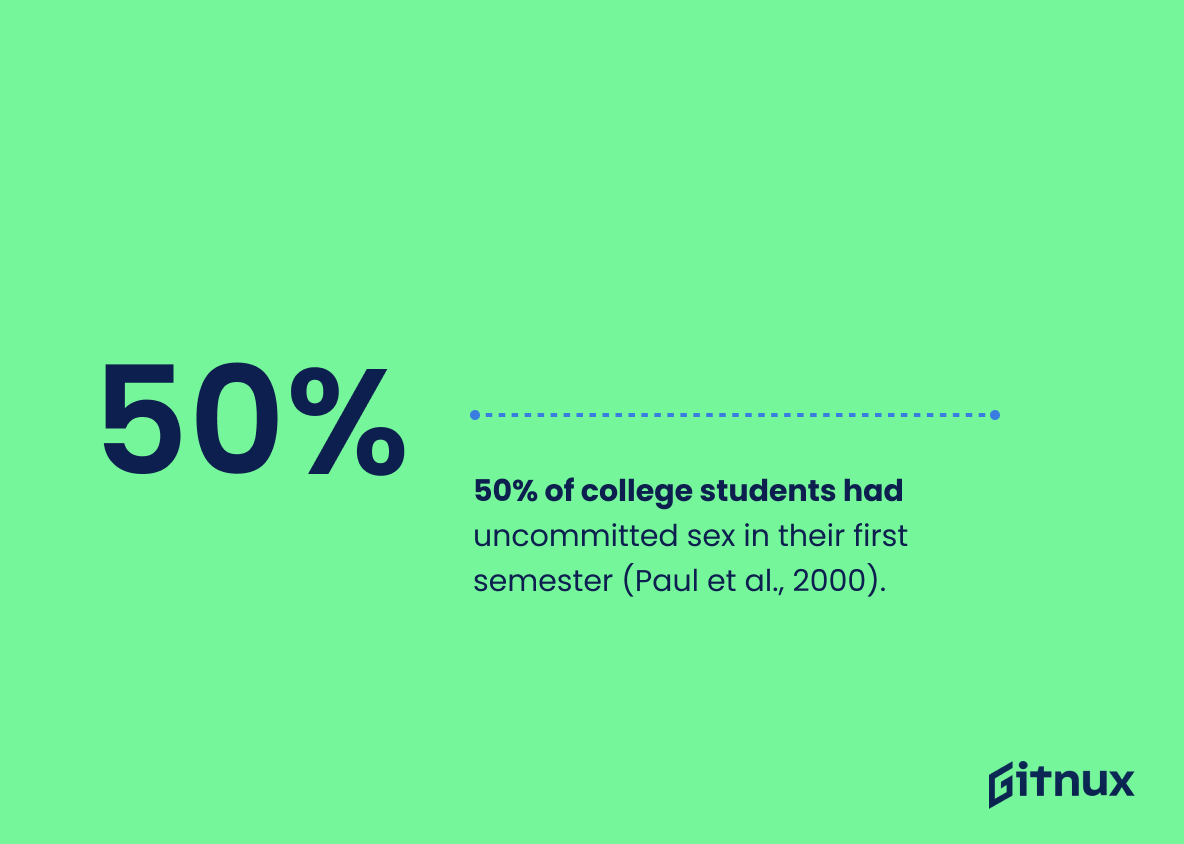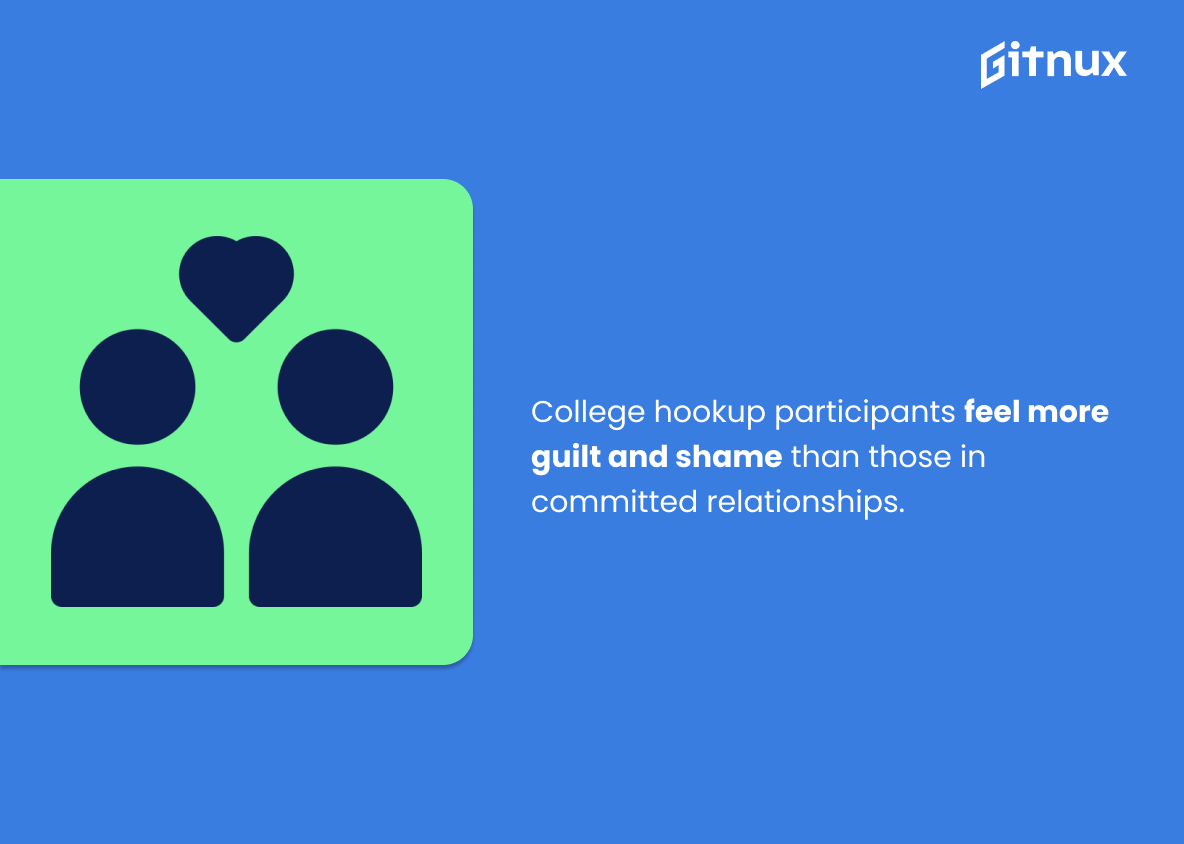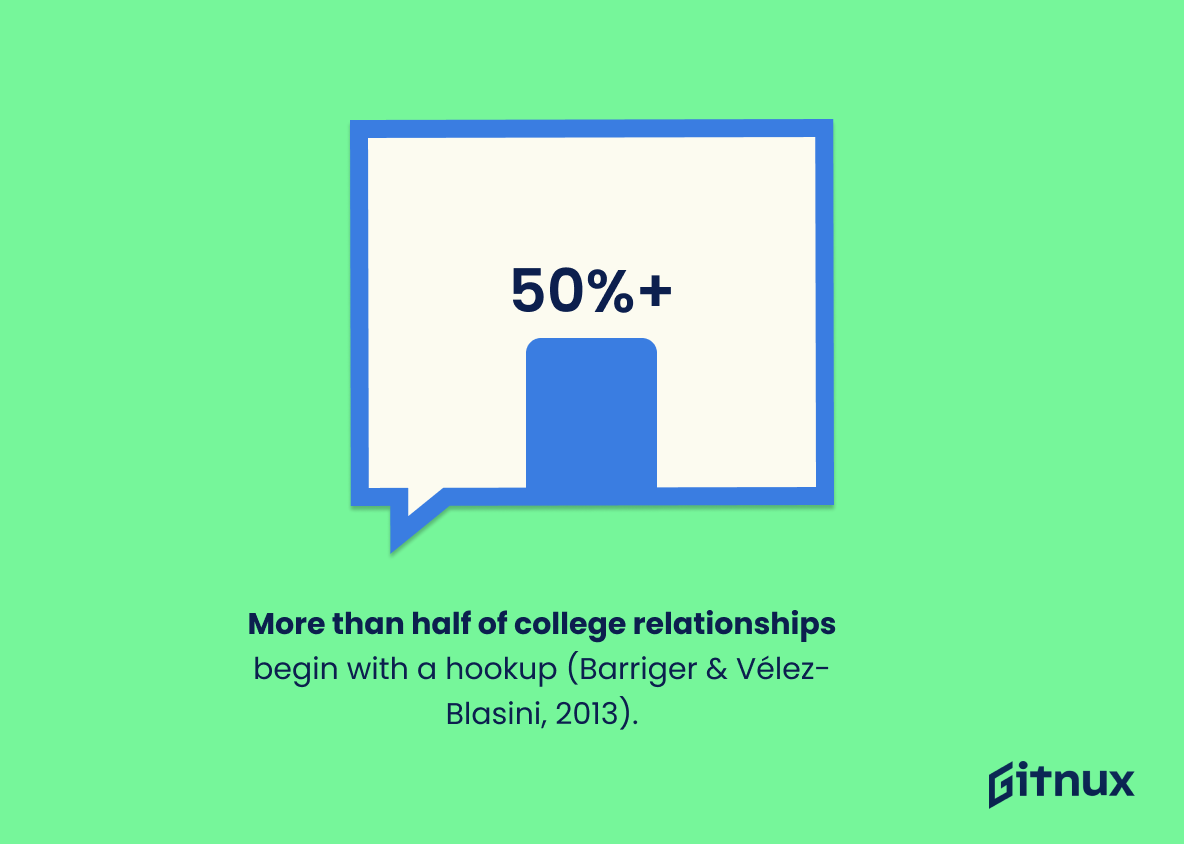Hookup culture has become increasingly prevalent on college campuses in recent years. Statistics show that 60%-80% of college students report participating in hookups at least once (Oswalt et al., 2019), and 40% of first-year female college students have reported participating in a hookup (Bogle, 2008). Furthermore, 91% of college students claim that the culture dominates their campus life (Glenn & Marquardt, 2001). While some may view this as an opportunity for exploration and fun, there are also potential risks associated with engaging in casual sexual encounters. For example, over a third of students report having at least one sexual regret after a hookup (Eshbaugh & Gute 2008) while only 30% feel satisfied following such an encounter (Garcia et al., 2012).
Additionally, less than 15% consistently use protection during these activities despite 24%, 38%, or even 63 % reporting kissing/petting/oral sex or wanting to be exclusive respectively(England et al., 2007; Hendrick et al., 2014; Bogle 2008). Moreover 89 percent prefer relationships to just “hooking up”(Glenn & Marquardt 2001); however 50 percent still engage sexually within the context of “hooking up” during their first semester alone.(Paul 2000) Finally drugs and alcohol play into 25 percentof all cases involving “hook ups”(Lewis 2011 ). This blog post will explore further statistics related to Hookup Culture among College Students including rates satisfaction levels ,regrets ,protection used etc .
This statistic is a powerful indicator of the prevalence of hookup culture among college students. It demonstrates that a significant majority of college students have engaged in hookups at least once, indicating that hookup culture is a pervasive part of the college experience. This statistic is important to consider when discussing the implications of hookup culture on college campuses.
40% of first-year female college students have reported participating in a hookup (Bogle 2008).
This statistic is significant in the context of a blog post about Hookup Culture Statistics because it provides a snapshot of the prevalence of hookup culture among first-year female college students. It demonstrates that hookup culture is a reality for many college students, and that it is an important factor to consider when discussing college life.
Hookup Culture Statistics Overview
Over a third of students report having at least one sexual regret after a hookup (Eshbaugh & Gute 2008).
This statistic serves as a stark reminder of the potential consequences of engaging in hookup culture. It highlights the fact that, for many, a seemingly casual encounter can have lasting emotional repercussions. It is a reminder that, while hookup culture may be a popular trend, it is not without its risks.
24% of hookups among college students involve kissing, petting, or oral sex, while sex with a condom is involved in just 9% of hookups (England, Shafer, and Fogarty 2007).
This statistic is a powerful indicator of the prevalence of unprotected sex in college hookups. It shows that, despite the availability of condoms, a large portion of college students are engaging in sexual activities without protection. This is concerning, as it increases the risk of sexually transmitted infections and unplanned pregnancies. Furthermore, it highlights the need for more education and awareness about the importance of safe sex practices.
Approximately 50% of college students had an uncommitted sexual encounter during the first semester of college (Paul et al., 2000).
This statistic is a powerful indicator of the prevalence of hookup culture among college students. It shows that a significant portion of college students are engaging in uncommitted sexual encounters, which is a key component of hookup culture. This statistic is important to consider when discussing the prevalence of hookup culture on college campuses, as it provides a tangible example of how widespread it is.
About 25% of college students who hook up do so using drugs or alcohol (Lewis et al. 2011).
This statistic is a stark reminder of the prevalence of drugs and alcohol in college hookup culture. It highlights the need for greater awareness and education around the potential risks associated with using substances while engaging in casual sexual encounters. It also serves as a reminder that college students should be mindful of their own safety and the safety of their partners when engaging in hookup culture.
More than 70% of sexually active 12-21-year-olds have had their experiences within the context of hookup culture (Goodson et al. 2006).
This statistic is a powerful indicator of the prevalence of hookup culture among young adults. It shows that the majority of sexually active individuals in this age group are engaging in hookup culture, suggesting that it is a widespread phenomenon. This statistic is important to consider when discussing the implications of hookup culture, as it provides a clear picture of the scope of the issue.
College students who engage in hookups are more likely to experience negative emotional reactions, including feelings of guilt and shame, than those in steady relationships (Manning et al. 2004).
This statistic is a powerful reminder of the potential emotional consequences of engaging in hookups. It highlights the fact that, while hookups may be a popular form of casual sexual activity among college students, they can also lead to feelings of guilt and shame. This is an important point to consider when discussing the implications of hookup culture, as it emphasizes the need for individuals to be aware of the potential emotional risks associated with engaging in this type of behavior.
More than half of college relationships begin with a hookup (Barriger & Vélez-Blasini, 2013).
This statistic is a powerful indicator of the prevalence of hookup culture in college settings. It shows that hookups are a common way for college students to start relationships, and that this type of behavior is accepted and even encouraged in many college environments. This statistic is important to consider when discussing the implications of hookup culture, as it demonstrates the extent to which it has become normalized in college life.
Conclusion
Hookup culture is a pervasive part of college life, with statistics showing that up to 80% of students have participated in hookups at least once. While some may find the experience satisfying and empowering, many report feeling regretful or dissatisfied afterwards. Furthermore, only 9% of hookups involve sex with a condom while over 25% involve kissing or petting without protection.
Additionally, most college-aged individuals prefer relationships to casual encounters but are still drawn into the culture due to peer pressure and social norms. These findings suggest that although hookup culture has become increasingly common on college campuses across America, it can be associated with negative emotional reactions as well as physical risks for those involved.
References
0. – https://www.pubmed.ncbi.nlm.nih.gov
1. – https://www.pewresearch.org
2. – https://www.nyupress.org
3. – https://www.tandfonline.com
4. – https://www.doi.org
5. – https://www.link.springer.com
